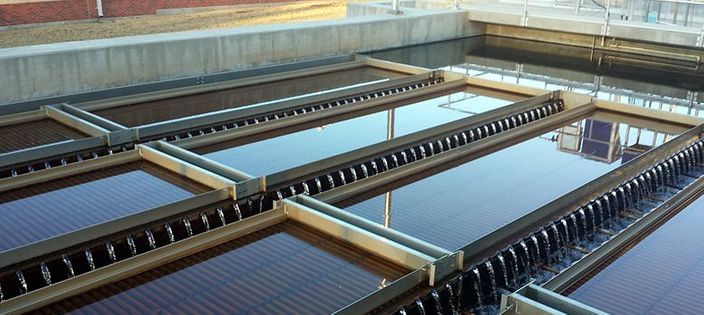Fort Smith wastewater non-consent decree work estimated to cost $194.8 million – Talk Business & Politics
Fort Smith wastewater non-consent decree work estimated to cost ... talkbusiness.net



Proposed Wastewater Non-Consent Decree 10-Year Capital Improvement Plan (CIP)
The Fort Smith Utility Department has put forward a proposed wastewater non-consent decree 10-year capital improvement plan (CIP) with a total cost of $194.854 million. The plan includes various large maintenance projects, system upgrades, and required projects.
2024 Proposed CIP
The proposed CIP for 2024 has a value of $11.486 million.
Allocation of Projects
“The Wastewater Non-Consent Decree 10-year CIP allocates projects over the entire 10-year period and prioritizes the projects by capital maintenance needs and future economic growth. Projects are categorized by type to facilitate understanding of the specific needs for each project, which may be built or designed in multiple phases or under multiple contracts. An example of this is the Massard Plant upgrades,” said Utilities Director Lance McAvoy in a memo.
Massard Plant Upgrades
The Massard Plant upgrades consist of multiple projects, including improvements to the aeration basin, a belt press, roof replacement, belt press macerator, and an overall plant upgrade. The aging trickling filters at the Massard Plant have already exceeded their useful lifespan and are structurally failing, according to the Massard Plant aeration basin project sheet.
The project sheet also notes, “Design and construction of an activated sludge aeration basin to replace the aging treatment system will ensure compliance and account for future treatment capacity requirements.”
The aeration basin project, which is a non-consent decree project, is expected to cost approximately $22.015 million, with $6.6 million budgeted for 2024. The belt press has $1.2 million budgeted for 2024 in the proposed CIP, and the roof replacement has $420,000 budgeted for next year. Other expenses for the Massard Plant upgrades are scheduled in later years.
Other Projects in the 2024 CIP
Additional projects listed in the CIP for 2024 include:
- $610,000 for Highway 45 utility sewer line relocation
- $2.5 million for equipment replacement
- $156,000 for lab HVAC make-up air replacement
The Kelley Highway Environmental Laboratory operates six make-up air blowers for the laboratory fume hoods. These blowers, which are over 20 years old, are no longer effective in venting hazardous fumes from the laboratory environment, as stated in the project sheet. It further emphasizes the need for their replacement to ensure staff safety.
Funding and Future Projects
The projects in the CIP will be funded from revenue set aside for the CIP or the 2018 Bond funds, according to McAvoy’s memo. Additional funds may become available through reimbursements from eligible projects.
In addition to the proposed CIP, the utility department has submitted a separate CIP for consent decree-related work, which could amount to $428.068 million over the next 12 years. The funding for these projects from 2024 to 2035 will come from revenue set aside for the CIP and the ⅝% sales tax approved by voters in 2022.
SDGs, Targets, and Indicators Analysis
1. Which SDGs are addressed or connected to the issues highlighted in the article?
- SDG 6: Clean Water and Sanitation
- SDG 9: Industry, Innovation, and Infrastructure
- SDG 11: Sustainable Cities and Communities
The article discusses the proposed wastewater non-consent decree 10-year capital improvement plan, which includes large maintenance projects and system upgrades for the Fort Smith Utility Department. These projects are related to improving water and sanitation infrastructure (SDG 6), upgrading wastewater treatment plants (SDG 9), and ensuring sustainable cities and communities (SDG 11).
2. What specific targets under those SDGs can be identified based on the article’s content?
- SDG 6.3: By 2030, improve water quality by reducing pollution, eliminating dumping and minimizing release of hazardous chemicals and materials.
- SDG 9.1: Develop quality, reliable, sustainable and resilient infrastructure, including regional and transborder infrastructure, to support economic development and human well-being.
- SDG 11.3: By 2030, enhance inclusive and sustainable urbanization and capacity for participatory, integrated and sustainable human settlement planning and management.
The targets identified in the article are related to improving water quality through wastewater treatment (SDG 6.3), developing sustainable infrastructure for economic development (SDG 9.1), and enhancing sustainable urbanization through the management of wastewater systems (SDG 11.3).
3. Are there any indicators mentioned or implied in the article that can be used to measure progress towards the identified targets?
- Investment in wastewater treatment projects
- Reduction in pollution and release of hazardous materials
- Improvement in water quality
- Upgrade and maintenance of wastewater treatment plants
- Development of sustainable infrastructure
- Enhancement of urban planning and management
The article mentions the proposed capital improvement plan (CIP) for wastewater treatment projects, which indicates investment in improving water quality and reducing pollution. The specific projects mentioned, such as the Massard Plant upgrades, aeration basin replacement, and equipment replacement, imply progress towards the targets of developing sustainable infrastructure and enhancing urban planning and management.
SDGs, Targets, and Indicators Table
| SDGs | Targets | Indicators |
|---|---|---|
| SDG 6: Clean Water and Sanitation | 6.3: By 2030, improve water quality by reducing pollution, eliminating dumping and minimizing release of hazardous chemicals and materials. | – Investment in wastewater treatment projects – Reduction in pollution and release of hazardous materials – Improvement in water quality |
| SDG 9: Industry, Innovation, and Infrastructure | 9.1: Develop quality, reliable, sustainable and resilient infrastructure, including regional and transborder infrastructure, to support economic development and human well-being. | – Investment in wastewater treatment projects – Upgrade and maintenance of wastewater treatment plants – Development of sustainable infrastructure |
| SDG 11: Sustainable Cities and Communities | 11.3: By 2030, enhance inclusive and sustainable urbanization and capacity for participatory, integrated and sustainable human settlement planning and management. | – Investment in wastewater treatment projects – Development of sustainable infrastructure – Enhancement of urban planning and management |
Behold! This splendid article springs forth from the wellspring of knowledge, shaped by a wondrous proprietary AI technology that delved into a vast ocean of data, illuminating the path towards the Sustainable Development Goals. Remember that all rights are reserved by SDG Investors LLC, empowering us to champion progress together.
Source: talkbusiness.net

Join us, as fellow seekers of change, on a transformative journey at https://sdgtalks.ai/welcome, where you can become a member and actively contribute to shaping a brighter future.







